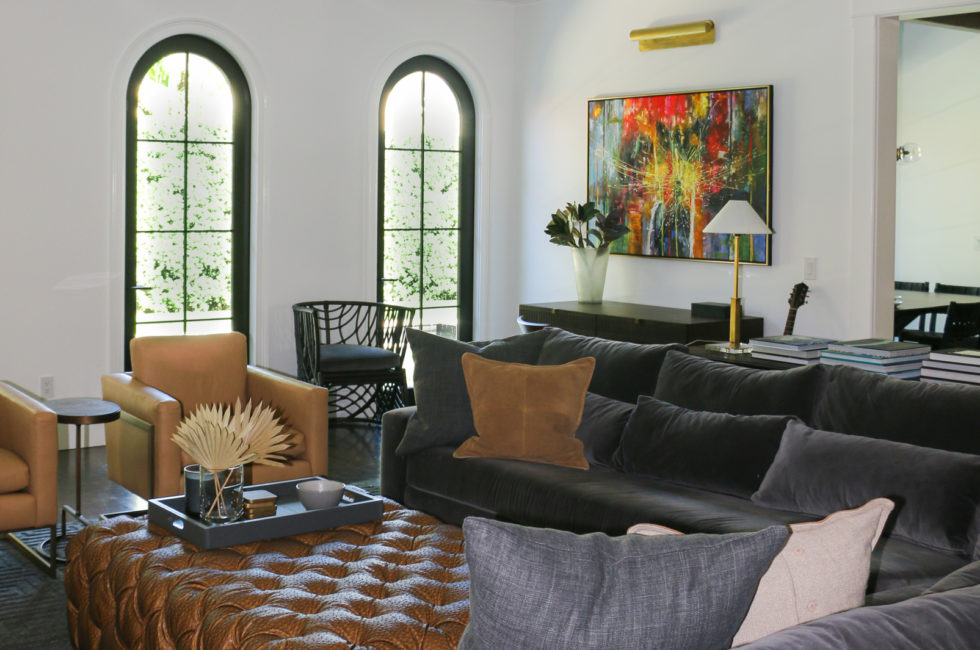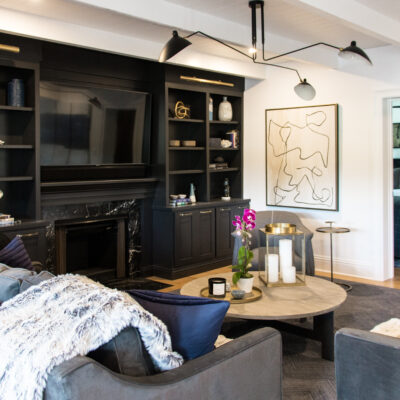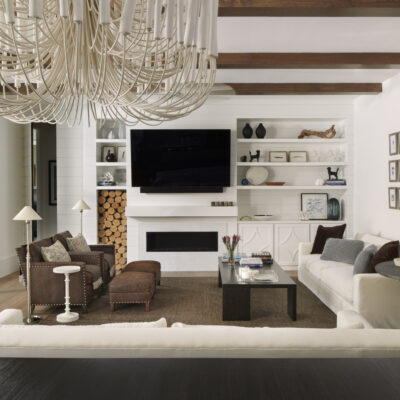Your living room is more than just four walls; it’s a canvas where you paint the stories of your life, a stage for your laughter, and a sanctuary to recharge. But have you unlocked its full potential? The arrangement of your furniture holds the key to transforming your living space into a captivating haven.
In this article, we invite you on a journey, guided by the expertise of Wolfe-Rizor Interiors, we’ll explore the art of rearranging your furniture, sharing tips, secrets, and real-life examples that will help you infuse fresh life into your living room, making it not only functional but a true masterpiece of aesthetics.
The Power of a Furniture Facelift
Rearranging your furniture isn’t just about creating a change for change’s sake; it’s a powerful design tool. It can breathe new life into your living room, make it feel larger, cozier, or more vibrant—all without the expense of new furniture. Here’s how to do it right:
Step 1: Clear the Canvas
Before you start moving things around, clear your living room of clutter. Take a moment to assess what you have, and consider what items are essential and what can be relocated or removed. A clean slate allows you to envision new possibilities.
Step 2: Define Your Space
What’s the primary function of your living room? Is it a place to entertain guests, a cozy family gathering spot, or a personal retreat? Define the purpose of the room, and let it guide your furniture arrangement.
Step 3: Create a Focal Point
Every living room needs a focal point. It could be a fireplace, a large window with a beautiful view, or even a well-curated gallery wall. Arrange your furniture to highlight this focal point, drawing attention to the room’s most captivating feature.
Step 4: Experiment with Layouts
Don’t be afraid to get creative with your furniture layout. Experiment with different arrangements to find the one that suits your needs and space best. Here are some popular layouts:
- Conversational: In this layout, seating is arranged to encourage face-to-face interaction. Place your sofa and chairs in a circle or U-shape, with a coffee table in the center.
- Symmetrical: For a formal and balanced look, arrange your furniture symmetrically. This means placing matching pieces on either side of your focal point.
- Asymmetrical: Asymmetrical layouts are more casual and eclectic. Mix and match furniture pieces to create an interesting and dynamic arrangement.
- Floating: In smaller living rooms, consider “floating” your furniture away from the walls. This can create a sense of spaciousness and define conversation areas.
Step 5: Traffic Flow
Consider the flow of traffic through your living room. Ensure there are clear pathways between furniture pieces, and people can move through the space without obstacles. Keep in mind that the ideal distance between seating and coffee tables is around 18 inches.
Step 6: Balance and Symmetry
Balance is key to a harmonious living room. Distribute visual weight evenly by placing larger or bulkier furniture pieces opposite each other. For example, if you have a substantial sofa on one side, balance it with a bookshelf or a console table on the other.
Step 7: Layer and Accessorize
Now that you’ve arranged your furniture, it’s time to add layers and accessories. Incorporate rugs, throw pillows, curtains, and decorative items to infuse personality and style into your space. These details can tie your living room together and make it feel complete.
Real-Life Transformations
To illustrate the power of furniture rearrangement, let’s explore a few real-life examples:
- Open and Airy Feel: Imagine a small, cramped living room with furniture pushed against the walls. By floating the sofa and chairs away from the walls and arranging them in a conversational layout, the room suddenly feels more open, inviting, and spacious.
- Cozy Family Hub: In a large living room lacking intimacy, consider creating two seating areas—a more formal one for guests near the focal point and a cozier one with a sectional sofa and floor cushions for family gatherings.
- Maximizing a View: If your living room has a stunning view, don’t obstruct it with furniture. Arrange your seating to face the view, allowing you to enjoy it to the fullest.
- Embracing Angles: In rooms with unique angles or architectural features, use the layout to embrace these quirks rather than fight against them. Angle your furniture to complement the room’s character.
- Multi-Functional Space: For small living rooms that serve multiple purposes, such as a home office or play area, consider furniture that can be easily moved or folded to adapt to changing needs.
At Wolfe-Rizor Interiors, we understand the impact of furniture arrangement on your living space. In addition to furniture arrangement, Wolfe-Rizor Interiors offers a wide range of services, including home renovation design. Whether you’re considering a complete home makeover or want to refresh a specific area, our experts can turn your vision into reality. Don’t hesitate to reach out to us today. Contact us and let’s bring your vision to life!



